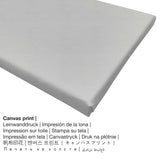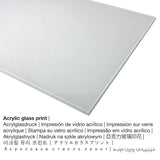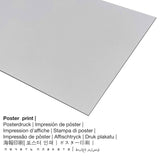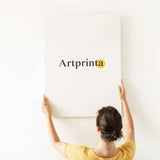James Jacques Joseph Tissot, 1862 - Powrót syna marnotrawnego - druk artystyczny
Podatek jest wliczony. Koszt wysyłki zostanie obliczony W kasie.
Szczegółowe informacje o produktach artystycznych
To więcej niż 150 year-old masterpiece was created by the master Jamesa Jacquesa Josepha Tissota in 1862. Arcydzieło zostało namalowane w rozmiarze: Wysokość: 115,5 cm, Szerokość: 206 cm. Olej, Płótno (materiał) was used by the painter as the medium of the painting. The original masterpiece has the following text as inscrption: Date and signature - Bottom left: "James Tissot 1862". Co więcej, to dzieło sztuki stanowi część Petit Palais - Musée des Beaux-arts de la Ville de Paris's kolekcja sztuki cyfrowej. Dzięki uprzejmości: Paryski Petit Palais (licencja: domena publiczna).Linia kredytowa dzieła sztuki: . Poza tym jest wyrównanie krajobraz ze współczynnikiem obrazu 16: 9, co oznacza, że długość jest o 78% większa niż szerokość.
Wybierz preferowany materiał przedmiotu
Do każdego druku artystycznego oferujemy różne materiały i rozmiary. Wybierz spośród następujących opcji produktu, aby dopasować je do swoich preferencji w zakresie rozmiaru i materiału:
- Nadruk metalowy (dibond aluminiowy): Aluminium Dibond prints are prints on metal with an outstanding effect of depth. A non-reflective surface structure creates a fashionable look. The bright parts of the work of art shimmer with a silk gloss, however without any glare.
- Druk plakatu (materiał płócienny): A poster print is a printed cotton canvas with a granular texture on the surface. It is best suited for placing the fine art print using a personal frame. Please keep in mind, that depending on the size of the canvas poster print we add a white margin 2-6cm round about the print motif, which facilitates the framing with a custom frame.
- Wydruk na płótnie: A canvas direct print is a printed canvas stretched on a wooden frame. A canvas of your favorite masterpiece will give you the unique opportunity of transforming your fine art print into a large artwork. Canvas prints are relatively low in weight. This means, it is quite simple to hang up the Canvas print without the support of additional wall-mounts. Therefore, a canvas print is suitable for any type of wall.
- Błyszczący wydruk na szkle akrylowym (z powłoką z prawdziwego szkła): An acrylic glass print, which is often denoted as a UV print on plexiglass, will change the original work of art into beautiful décor. Your favorite artwork is being custom-made with the help of state-of-the-art UV direct print technology. This creates deep, vivid color shades. With a glossy acrylic glass art print contrasts as well as painting details will be identifiable with the help of the delicate gradation.
Ważna informacja: We try whatever we can to depict our products with as many details as it is possible and to display them visually on the respective product detail pages. Although, the pigments of the printing material and the printing might vary marginally from the presentation on your device's monitor. Depending on the screen settings and the condition of the surface, not all color pigments are printed one hundret percent realistically. Bearing in mind that all our art prints are printed and processed manually, there may also be minor differences in the exact position and the size of the motif.
Produkt
| Kategoryzacja druku: | reprodukcja dzieł sztuki |
| Metoda rozmnażania: | reprodukcja cyfrowa |
| Technika produkcji: | Bezpośredni nadruk UV |
| Produkcja: | Produkcja niemiecka |
| Rodzaj akcji: | produkcja na żądanie |
| Proponowane zastosowanie produktu: | dekoracja ścienna, projekt domu |
| Wyrównanie: | wyrównanie krajobrazu |
| Współczynnik proporcji obrazu: | 16: 9 długość do szerokości |
| Znaczenie współczynnika proporcji: | długość jest o 78% dłuższa niż szerokość |
| Dostępne wybory: | wydruk na płótnie, wydruk na szkle akrylowym (z powłoką z prawdziwego szkła), wydruk plakatu (papier płócienny), wydruk metalowy (dibond aluminium) |
| Wydruk na płótnie (płótno na blejtramie): | 90x50cm - 35x20", 180x100cm - 71x39" |
| Obraz na szkle akrylowym (pokryty prawdziwym szkłem) warianty rozmiarów: | 90x50cm - 35x20", 180x100cm - 71x39" |
| Rozmiary wydruku plakatu (papier płócienny): | 90x50cm - 35x20" |
| Warianty druku dibond aluminiowy (materiał aluminiowy): | 90x50cm - 35x20" |
| Ramka: | Bez ramki |
Podstawowe informacje o oryginalnym dziele sztuki
| Nazwa obrazu: | "The return of the prodigal son" |
| Klasyfikacja: | malarstwo |
| Szeroka kategoria: | sztuka współczesna |
| Wiek sztuki: | 19th wieku |
| Utworzony w: | 1862 |
| Wiek dzieła: | ponad 150 lat |
| Oryginalny nośnik grafiki: | Olej, Płótno (materiał) |
| Wymiary oryginalnej grafiki: | Wysokość: 115,5 cm, Szerokość: 206 cm |
| Podpis na dziele: | Date and signature - Bottom left: "James Tissot 1862" |
| Muzeum: | Petit Palais - Musée des Beaux-Arts de la Ville de Paris |
| Miejsce muzeum: | Paryż, Francja |
| Adres internetowy muzeum: | Petit Palais - Musée des Beaux-Arts de la Ville de Paris |
| Licencja na grafikę: | domena publiczna |
| Dzięki uprzejmości: | Paryski Petit Palais |
O artyście
| Nazwa: | Jamesa Jacquesa Josepha Tissota |
| Praca artysty: | malarz |
| Kategoria artysty: | współczesny artysta |
| Wiek w chwili śmierci: | 66 roku |
| Rok urodzenia: | 1836 |
| Miejsce urodzenia: | Nantes |
| Zmarły: | 1902 |
| Zmarł w (miejsce): | Chenecey-Buillon |
© Prawa autorskie - Artprinta.com
Dodatkowe informacje o dziełach sztuki na stronie internetowej muzeum (© Prawa autorskie - Petit Palais - Musée des Beaux-arts de la Ville de Paris - www.petitpalais.paris.fr)
The parable of the prodigal son is taken from the Gospel according to Luke. A son who had left the family home with his inheritance quickly spent his money and soon found himself in misery. He later returned imploring kneeling pardon of his father who happily accepted the return of his child. Father welcomes her child in the yard of his rich remains under the curious gaze of residents. Behind a fortified gate are staged roofs of the city and the foothills of a Gothic cathedral. Tissot features the return of the prodigal son in a medieval setting. Its neo-Flemish style recalls the way the painter Henri Leys Antwerp (1815-1869).
This painting was exhibited at the Salon of 1863 along with its counterpart, "The start of the prodigal son", also kept at the Petit Palais. The harsh criticisms that are brought to him because of his neo-Gothic inspiration have contributed to the evolution of his work to the painting of modern life. Tissot will resume later this theme of the prodigal son, but locating the scenes in the nineteenth century.
Biblical scene, the prodigal son, the New Testament Scene














